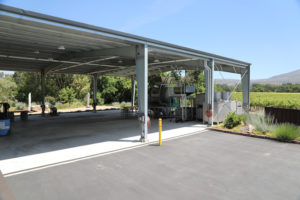
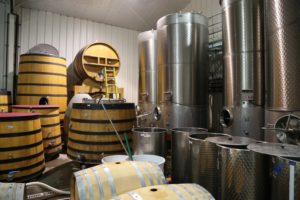
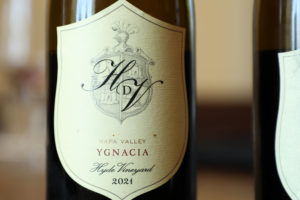 HdV Wines is located on the northern fringes of the city of Napa just west of the Silverado Trail off of Trancas Ave. The first vintage was in 2000 and the physical Hyde de Villaine winery was completed in 2003. HdV is a partnership between two extremely accomplished wine making families: the Hyde’s based in Napa Valley and the de Villaine’s, based in Burgundy, France. This partnership was helped in part through marriage as Aubert de Villaine married one of Larry Hyde’s first cousins, Pamela.
HdV Wines is located on the northern fringes of the city of Napa just west of the Silverado Trail off of Trancas Ave. The first vintage was in 2000 and the physical Hyde de Villaine winery was completed in 2003. HdV is a partnership between two extremely accomplished wine making families: the Hyde’s based in Napa Valley and the de Villaine’s, based in Burgundy, France. This partnership was helped in part through marriage as Aubert de Villaine married one of Larry Hyde’s first cousins, Pamela.
Larry’s family history in California dates back to the late 1700s. He is a descendant of José de la Guerra a prominent rancher and Spanish military officer who spent time in San Diego, Monterey and Santa Barbara in the early to mid 1800s. His namesake is on several Santa Barbara locations including the De La Guerra Plaza. This is a very historical part of town; it where the first Santa Barbara city council met in 1850 and is one of the Santa Barbara’s original parks. And of course, one of the border streets is called de le Guerra Street. Incidentally the offices for the Santa Barbara Press newspaper were located in this plaza until this newspaper ceased publication in 2023. The Santa Barbara Press was the oldest daily newspaper in Southern California; its first issue was published in 1868.
And the old 13-room family adobe home (with a sizable courtyard), Casa de la Guerra dates back to the 1828 and is where José de la Guerra lived until his passing in 1858 – although de la Guerra heirs lived here until 1943. His old house which survived several bad earthquakes including sustaining significant damage in the Fort Tejon earthquake of 1857 and surviving the terrible Santa Barbara earthquake in 1925; this quake leveled much of the town which was rebuilt with old Spanish style architecture. Casa de la Guerra is now a museum, a tribute this family and their contributions to California. The interior that represents how life would have looked like during those decades.
The coat of arms on all their wine labels is their family’s original crest. And their family has been making wine for a long time – back to at least the 1870s. The family has records of one of their wines winning a Gold Medal at the Philadelphia Centennial Fair in 1876.
Casa De La Guerra, Santa Barbara
Larry’s first wine job was working in the vineyards at Ridge Vineyards in 1970. Later he worked in the winery at Joseph Phelps (during their early years. With both vineyard and winemaking experience under this belt, he started Hyde Vineyard in Carneros in 1979 after his father Richard purchased their initial land. The ranch has since expanded to nearly 200 planted acres spanning both sides of Highway 12 – all on the Napa side of Carneros. Approximately 38 of their total planted acres are devoted to the HDV wines. There are a select few vineyards in this sub appellation that have immediate name recognition, Hyde certainly is one of them. After years of being a grower, Hyde and his family opened a physical winery in Carneros in 2017.
Hyde Vineyard is the single source for the entire lineup of HDV wines but also supplies grapes to a number of other well-known Napa, Sonoma and other California based wineries. Hyde Ranch is located south and west of the actual winery – a short drive away.
The vines next to HDV’s physical winery used to be Syrah. In 2016 HDV purchased this 23 acre site to the east of the winery and replanted to Cabernet Sauvignon and a small block of Sauvignon Blanc. As of our latest update to this review, these grapes are not used in the HDV wines but rather are sold to other area producers.
One of the most sought-after wines in the world are from the small Pinot Noir and Chardonnay Burgundian based winery, Domaine de la Romanée-Conti (commonly referred to as DRC). These extremely limited production wines often are some of the world’s most expensive. Aubert de Villaine is co-owner of this storied and historically significant estate. So, when these two individuals decide to partner and create a Napa wine, one does take notice – when visitors ask for premium Napa Valley grown and produced Chardonnay, invariably this winery is often right at the tip of our tongue.
Early in his career, De Villaine worked in the wine business in both New York and California. A moment in time that elevated the perception of Napa Valley wines, referred to as the Paris tasting of 1976, was attended by De Villaine; he was one of the judges.
This is very much a working winery and nothing here is about flash or visual appeal commonly found at well-manicured tasting rooms. The focus is on the wines and production including several other small winery clients. As soon as visitors step inside the main winery building, they will be surrounded by wine barrels, several concrete tanks and wooden foudres. Until 2020, the space was also used to house several custom crush clients. Today, the space is dedicated entirely to the HDV wines.
Their approach to wine eschews manipulation and favors an organic and natural approach; the only additions they make are yeast, sulphur and malolactic bacteria. Much of the work that goes into making these premium wines starts and ends in the vineyards. With that said, HDV has all the tools to be flexible based on vintage and adjustments are made in the cellar based on the attributes of that year’s grapes.
The wine making team handles the grapes as minimally and gently as possible although once picked they have a rigorous sorting program in place allowing only the finest berries to be used. Gravity flow is used as much as possible rather than pumps; each of the barrel lots is carefully followed throughout its aging and only the “best” barrels are selected for their final blends.
Select Wines
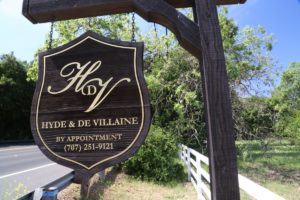
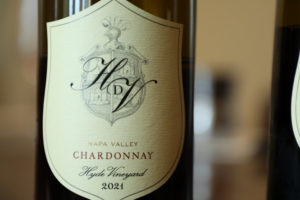
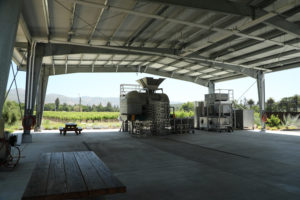 Chardonnay is HDV’s flagship variety; they produce three separate Chardonnays each year. Disregard any preconceived notions you might have about malolactic fermentation in regard to Chardonnay when you try these. These wines undergo 100% secondary fermentation with neutral bacteria but are wines that are not characterized by the usual components when discussing malolactic fermentation (I.E., buttery or viscous etc.). And the reason their wines undergo full malolactic fermentation is prior to this secondary fermentation, their Chardonnay is so high in acid it has been described as “being somewhat unpleasant on the palate”. But the results of this full secondary fermentation do not equate to buttery characteristics in the wine; this is attributed to the cold and extended fermentations lasting up to 8 or 9 months. The finished Chardonnay wines are not “meals in a glass”, rather they are bright, well balanced and very food-friendly.
Chardonnay is HDV’s flagship variety; they produce three separate Chardonnays each year. Disregard any preconceived notions you might have about malolactic fermentation in regard to Chardonnay when you try these. These wines undergo 100% secondary fermentation with neutral bacteria but are wines that are not characterized by the usual components when discussing malolactic fermentation (I.E., buttery or viscous etc.). And the reason their wines undergo full malolactic fermentation is prior to this secondary fermentation, their Chardonnay is so high in acid it has been described as “being somewhat unpleasant on the palate”. But the results of this full secondary fermentation do not equate to buttery characteristics in the wine; this is attributed to the cold and extended fermentations lasting up to 8 or 9 months. The finished Chardonnay wines are not “meals in a glass”, rather they are bright, well balanced and very food-friendly.
Whites/Rosé
The 2023 HDV Hyde Vineyard Rosé of Pinot Noir was produced by saignée – about 20% of the juice was bled out to produce this wine including all juice resulting from time spent on the shaker/sorting table. After fermentation it was aged in stainless steel tanks for 6 months. It is medium pink in color; the nose needs time to open as when served cold, it is initially a bit shy. Its scents are elegant and delicate, offering light red berry fruits including raspberry. Balanced is the best descriptor to describe its cadence across the mineral driven palate. Flavors include cranberry, red cherry and raspberry. In terms of mouth feel, the light fleshy texture balances nicely with the bright acidity. The fruit continues to persist for some time on the finish. This is a very versatile rosé with food and tasting this made us think of pairing this bottling with friend oysters. It is the only wine in the HDV portfolio that is filtered.
The 2021 HDV Chardonnay Hyde Vineyard is a blend of 60% Wente clone and 40% Calera harvested from vines ranging in age between 11 to 43 years old. It went through full malolactic fermentation. During its time aging in barrel, the wine sat on the gross lees but was not stirred and was racked only once, prior to bottling. This wine is deep gold; the bouquet is more delicate than many contemporary Napa Valley Chardonnays we are used to. It initially offers a light honeyed note with aromas of vanilla, butterscotch and a stone fruited character, including of yellow peaches. Two words we never use in conjunction with describing anything due to their opposite natures are delicate and richness. But we wrote this to describe the cadence of the palate. It reveals flavors of nectarine, peach, butterscotch and lingering notes of dill and hazelnut accompanied by a rounded and supple texture that gently glides across the palate like a figure skater at the top of her game. Balanced acidity. An impressive showing and also age worthy. A normal production of this wine is generally between 1800 and 2200 cases; in 2021 due to drought pressures, only 900 cases were produced.
The 2014 HDV De La Guerra Chardonnay shows straw color in the glass with noticeable hazelnut, almond and a creme Brulé aroma on the bouquet, framed by notes of lemon and apple. The palate shows additional notes of citrus; the mouth-feel is rounded but not overly creamy. This freshness or crispness carries onto the extended finish. The De La Guerra label has since transitioned into a wine meant for distribution. Its focus is still on Chardonnay and includes grapes from Hyde Vineyard but also primarily from another vineyard source on the Napa side of the Carneros District.
Balance is a word that is sometimes loosely used to describe wines. But these wines are the perfect definition of this descriptor. Not one aspect dominates; they are focused on the varietal and site characteristics resulting in wines with freshness, approachability in their youth but also with the attributes of being extremely age worthy.
Their wines express a sense of place with the intent to preserve the vibrancy, regardless of variety, displayed from cool climate sites.
Reds
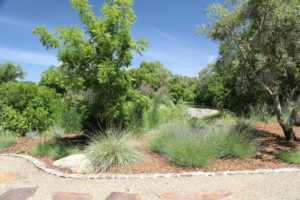
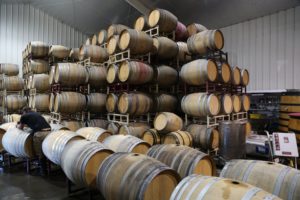 The 2021 HDV Ygnacia Hyde Vineyard includes five heritage clones from a 3.5 acre block. This wine was first produced in 2013 with the first few vintages being fermented with some stem inclusion. Ultimately it was determined that stems did not contribute to the desired elegant and perfumed qualities they want to highlight in wines from this variety. Now it is a rare vintage when any stems are included. This wine was cold soaked up to 36 hours prior to a warm, but not hot fermentation which occurred in both wooden fermenters and small stainless steel tanks. All clones were fermented together. This wine is medium ruby in color; the bouquet offers scents of dry mushroom, a hint of old cedar box which reminded us of our grandmothers’ jewelry box that she gifted us many years ago prior to her passing, lavender and note of sage. The palate is bright, energetic but not boisterous. Its flavors include red cherry, currant and cranberry. A light dusty character persists on the finish. Savory. The tannins are present and noticeable featuring a lightly grainy texture with edges that will be rounded given time in the bottle, but even at this early stage, they are already well-integrated into the finish.
The 2021 HDV Ygnacia Hyde Vineyard includes five heritage clones from a 3.5 acre block. This wine was first produced in 2013 with the first few vintages being fermented with some stem inclusion. Ultimately it was determined that stems did not contribute to the desired elegant and perfumed qualities they want to highlight in wines from this variety. Now it is a rare vintage when any stems are included. This wine was cold soaked up to 36 hours prior to a warm, but not hot fermentation which occurred in both wooden fermenters and small stainless steel tanks. All clones were fermented together. This wine is medium ruby in color; the bouquet offers scents of dry mushroom, a hint of old cedar box which reminded us of our grandmothers’ jewelry box that she gifted us many years ago prior to her passing, lavender and note of sage. The palate is bright, energetic but not boisterous. Its flavors include red cherry, currant and cranberry. A light dusty character persists on the finish. Savory. The tannins are present and noticeable featuring a lightly grainy texture with edges that will be rounded given time in the bottle, but even at this early stage, they are already well-integrated into the finish.
The HDV Syrah is always 100% varietal. The 2019 HDV Syrah Californio includes 3 different heirloom clonal selections of this variety including from Burgundy and Australia. This wine is deep ruby, inky and opaque; the bouquet immediately offers aromas focused primarily on its fruit characteristics rather than influence from its barrel aging. It is a darker expression including of blackberry, dark raspberry and a hint of dark licorice. Fresh and lively across the palate, its brightly light by its acidity. Its flavors include cherry and red plum. The tannins are lightly gravely and linger with a dusty character, assorted dried herbs and a light crushed pepper note but it is not peppery. The dryness persists beyond the fruit on the finish. Would love to pair this with a spicy dry rub tenderloin on the BBQ. This is a wine with depth and complexity but without high alcohol and is one of Napa Valley’s more balanced wines of this variety.
The 2012 HDV Californio Syrah shows a mix of black cherry, cinnamon, sweet baking spices with slight floral notes – aromatically this wine shines well. It does not show a meaty/savory component that often is present in warmer weather grown wines of this variety. On the palate shows a richness of fruit, but is in balance between structure and acidity. The tannins are well defined but not overly robust in character. HDV holds their red wines back four years before releasing them to the consumer. This wine is a tribute to the Hyde’s heritage – a Californio is a person of Spanish heritage who spoke Spanish and who resided in what would become the state of California between the years of 1683 and 1848. HDV bottles ages this wine a few years before it is released – as a result current vintages are often 4-5 years old.
With one exception, the HDV wines are all from Hyde Vineyards in Carneros. As of our latest update to this review, HDV purchases grapes from Caldwell Vineyard in Coombsville for their Carillo Cabernet Sauvignon bottling. The first vintage of this wine was in 2018 from Block 11; they have since transitioned to Block 13. But the important thing to note here is HDV determines the pick date, often harvesting a month before Caldwell or his other clients.
The 2019 HDV Napa Valley Carrillo Cabernet Sauvignon is 100% varietal; this wine is deep ruby and opaque. Like their Syrah, HDV ages this wine in bottle extra time before it is released. The bouquet offers a diversity of aromas including lavender, smoked sage, bramble, red cherry, and a hint of tobacco spice. The palate is brightly lit with flavors of red cherry, red plum and currant. This is a texturally driven wine featuring lightly grainy, chewy and almost chalky tannins lingering with a persistent drying character. This wine finishes savory with bright acidity, a note of dried herbs including sage and a light tartness on the finish. This is not a style of wine from Caldwell Vineyard that we are used to tasting; it is a refreshing expression of the cooler side of Coombsville reflecting both viticultural practices but also equally as important, the earlier harvest date.
—
For several years, HDV donated a barrel of wine to what was Auction Napa Valley. Remarkably their barrel was the only white wine out of 100+ barrels of red wines that were donated by Napa Valley wineries. What was surprising (considering their wine is competing against some of Napa’s powerhouse Cabernet Sauvignons) is that their wine was typically in the top 10 highest receiving bids at this auction.
Because this is a small winery and they do receive a number of requests for tastings, one should schedule appointments well in advance. As with other small area wineries, they have more time constraints during harvest in September and October and they are already a fairly small operation with only a few employees.
Tastings are always conducted with one of their long-time wine educators or perhaps their assistant winemaker. Visits are either inside the winery on a table resting on top of two wine barrels, in an adjoining private room or if weather permits, outside on a patio above the southern bank of the Napa River.
And within a short distance across the Napa River in what is now Trancas Crossing Park, used to be an old adobe structure built in the early 1840s by Don Salvador Vallejo, the brother of General Mariano Vallejo. The Vallejo’s were contemporaries of José de la Guerra. Vallejo’s residence was the headquarters for his Rancho Napa, a land grant which included more than 3,000 acres. It was known as “The Happy Casa” and was one of three adobes he built and owned in Napa Valley. He willed this adobe to his son Ignacio in 1850 who lived in it until it was destroyed by fire in 1919.
Total annual production is generally between 4,500 and 5,000 cases. The wines are primarily sold direct to allocation list members, through visits to the winery and some distribution including to parts of Europe and Asia. To schedule a visit, to join the allocation list or for more information, please visit: www.hdvwines.com
Domaine Romanée Conti
When it comes to Pinot Noir and Chardonnay, Bourgogne is the ‘mothership’. And within Bourgogne certain sites are more iconic than others including the cozy confines of Domaine Romanée Conti’s hallowed vineyards.
One can’t mention some of the world’s greatest wine producers without mentioning this domaine. And there are reasons for this; they only produce wine from Grand Cru sites (in Bourgogne, unlike in Champagne cru refers to classification by vineyard, rather than village and Grand Cru wines comprise less then 1.5% of Bourgogne’s total wine production), their history is remarkable, dating back to a vintage produced in 1232 when the Abbey of Saint Vivant purchased what is now known as Romanée-Conti, their commitment to quality and their extremely limited production.
Its modern-day history dates back to 1869. Presently, Domaine Romanée Conti is equally owned by two families; the de Villaine family has owned half of the estate’s shares since 1887 and is the connection with Hyde Vineyards and HDV in Napa Valley and the Leroy family has owned the other half since 1942.
Total production each year across all their properties varies between 6,000 to 8,000 cases. Their vines are older with an average age of 44 years, are planted high density and are farmed biodynamically. Domaine Romanée Conti owns the following vineyards: Romanée-Conti, La Tâche, Richebourg, Romanée-St-Vivant, Grands Échezeaux, Échezeaux and Montrachet (their Chardonnay planting). They farm leased vineyards including in Corton, and in 2018 they began farming and producing another Chardonnay from Corton-Charlemagne. And Romanée-Conti and La Tâche are monopoles controlled entirely by Domaine Romanée Conti.
Visitors to the commune (village) of Vosne-Romanée (population, approximately 350) can make the short walk or drive to the 4.4-acre site of Romanée-Conti. Visually this vineyard may look no different than any of the other nearby beautiful sites. But this small parcel of land produces some of the most iconic and expensive wines in the world. And one knows its special when one sees all the tourists during certain times of the year, lining up across from the stone wall taking pictures including the famous stone cross next to the vineyard.
And this site is a five-minute walk from Domaine Romanée Conti’s cellar; as one approaches the winery, if one knows where to look, one can see the winged angel sculpture in their courtyard – easier to see when there are no leaves on the nearby vines.
Depending on traffic, Vosne-Romanée is about a 3.5 to 4+ hour drive from Charles de Gaulle Airport in Paris or about a 30-minute drive from the center of Dijon.
Vosne-Romanée is a cute village and worth spending some time to walk its historic streets. For such a small town, it boasts an inordinate number of restaurants based on its tiny population. Also worth visiting is the ancient cemetery on the northern edge of town.
The best wine bookstore in Bourgogne is Athenaeum in Beaune, located across from the Hospices de Beaune (part of the world’s oldest wine charity auction dating back to 1862 held every November). Athenaeum has previously hosted Aubert du Villaine for various wine events, the former co-director of this storied winery for 48 years before he stepped back to an advisory role starting in 2023. Several books worth reading relating to Domaine Romanée Conti are the following: The Prince of Romanée-Conti, Shadows in the Vineyard and Romanée Conti: the world’s most fabled wine.
Wilson Daniels is the exclusive importer (since 1979) of the Domaine Romanée Conti wines into the U.S. For more information about Domaine Romanée Conti visit: www.romanee-conti.com

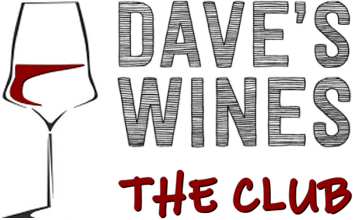




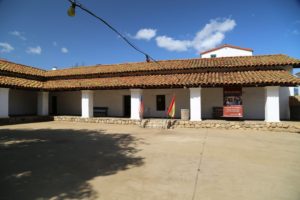
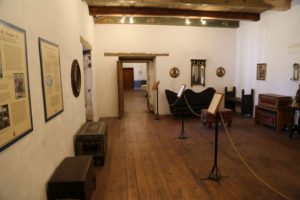
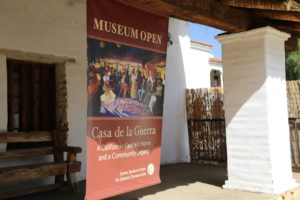
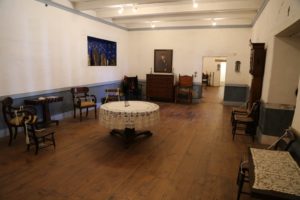
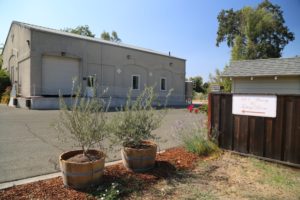
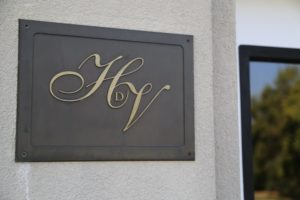
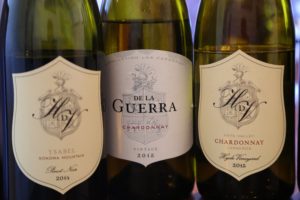
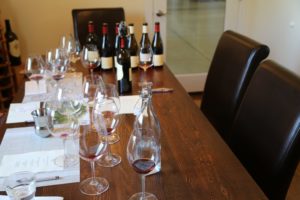
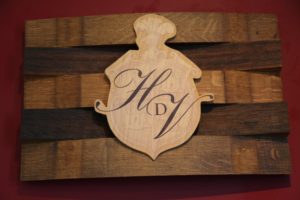
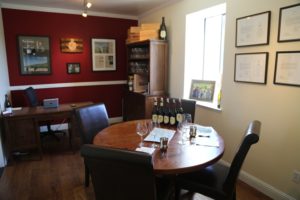
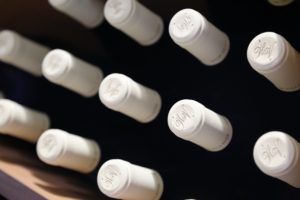
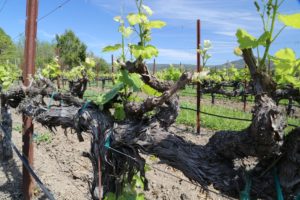
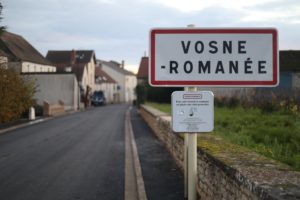
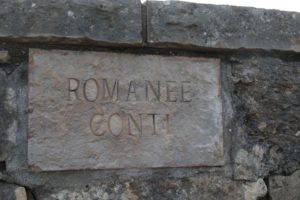
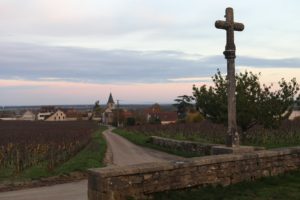
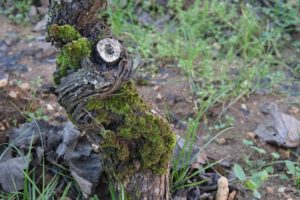
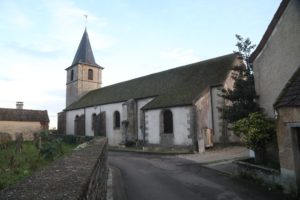

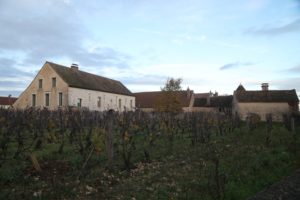
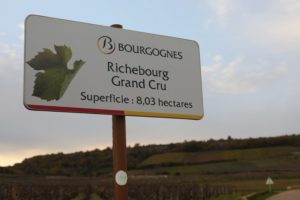
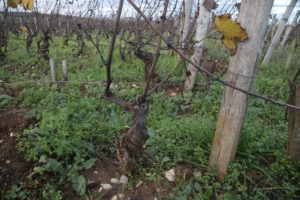
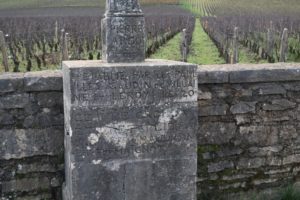
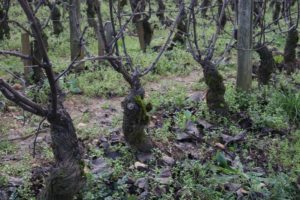
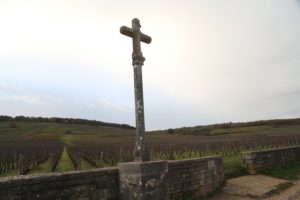
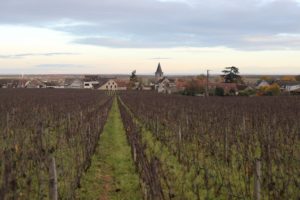
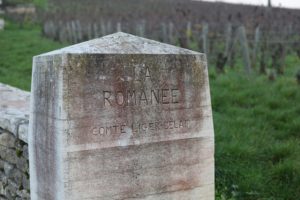
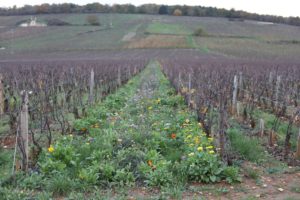
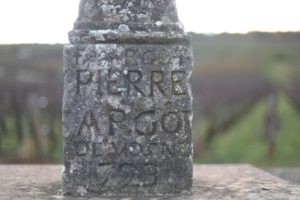
I am hosting a wedding dinner tonight at Cafe Boulud, in Palm Beach, Florida. Imre Papp, the Head Sommelier, suggested the HDV Chardonnay as his recommendation for the “white” wine tonight. So we are looking forward to it. In the late 80s early 90s, I was co-owner of a 286 acre ranch in the Alexander Valley, and the 106 acre Lambert Bridge Winery on Dry Creek Road, outside of Healdsburg. So am always happy to learn of a new (for me)California wine. Happy to be introduced to HDV by Imre, and looking forward to tonight.
Lawrence – enjoy your dinner this evening, sounds like your are in good hands with Imre – especially if he is suggesting the HDV Chardonnay! Be sure to get a bottle of the HDV Syrah if you can find it. If you get out to Napa let me know – happy to introduce you to some more smaller premium producers – I’m pushing 1200 Napa wineries and producers visited, tasted with and reviewed. Just had a nice tasting at Colgin this morning. This is an amazing valley 🙂
Hi Dave, who is current winemaker for HdV? Thank you!
Jarred – I believe Guillaume Boudet is the current winemaker. I think the last few years before he left in 2020, Stéphane was in more of a consulting role. And it’s been too long since I’ve been to HDV, although I drive by every week. A revisit is much needed, and I will update tasting notes on this review at that time.